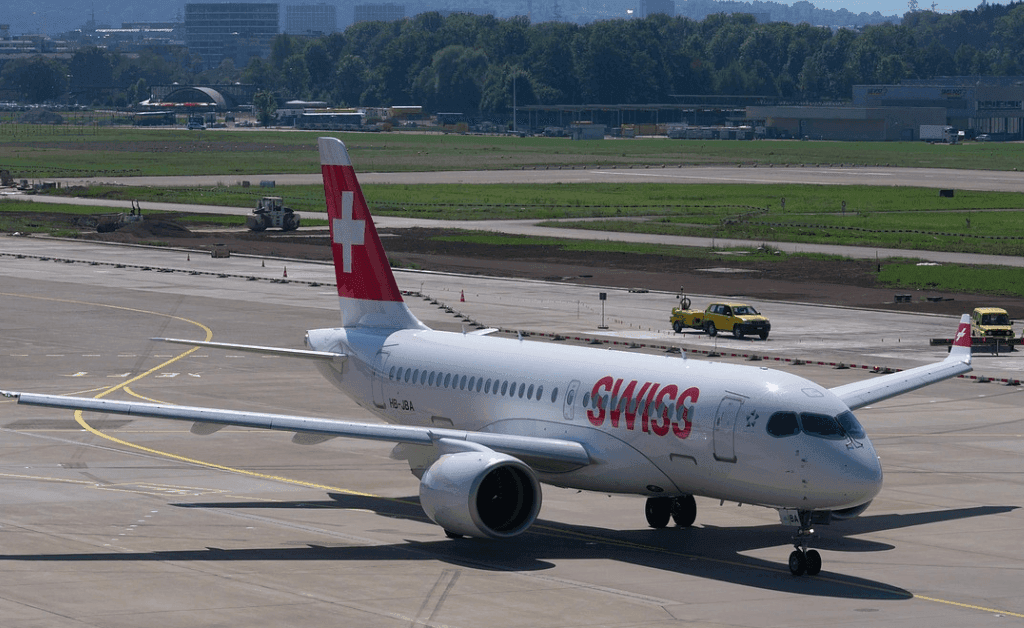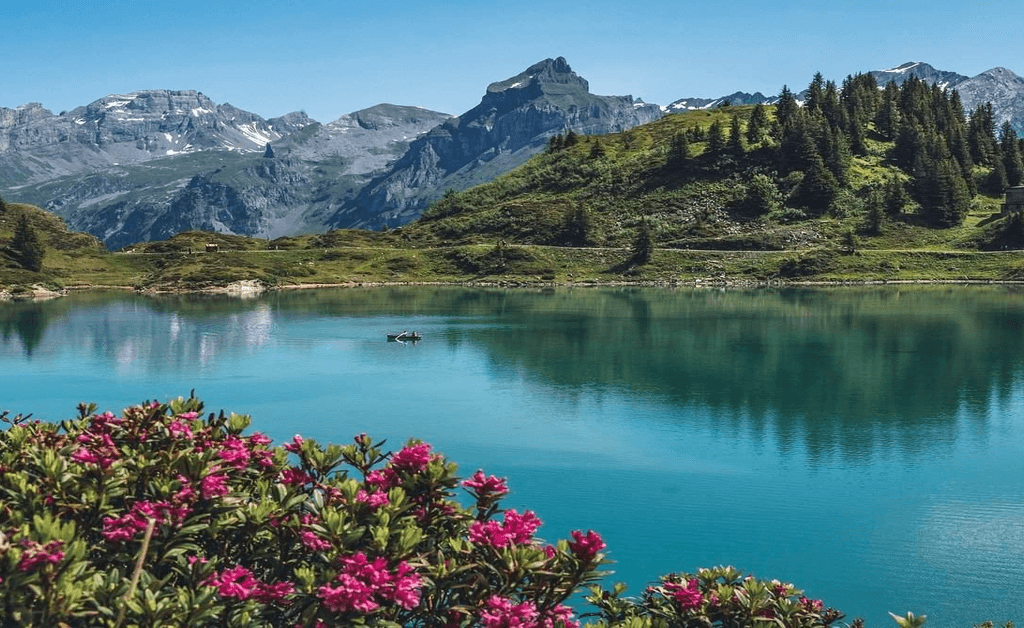
Switzerland is a land of breathtaking Alpine scenery, charming medieval towns, crystal-clear lakes, and some of the world’s most scenic railway journeys. Despite its small size, this Alpine nation packs an incredible amount of beauty and cultural diversity into its borders. After multiple visits and extensive research, I’ve crafted this comprehensive 10-day Switzerland itinerary to help you experience the very best this stunning country has to offer.
From the cosmopolitan city of Zurich to the majestic Matterhorn in Zermatt, this carefully planned route takes you through Switzerland’s most spectacular landscapes while balancing urban exploration, mountain adventures, and cultural experiences. Whether you’re a first-time visitor or returning to explore more deeply, this itinerary provides the perfect blend of iconic highlights and hidden gems.
Key Takeaways
- This 10-day Switzerland itinerary covers Zurich, Lucerne, Interlaken, Grindelwald, and Zermatt
- The Swiss Travel Pass offers excellent value for this route, covering trains, buses, boats, and museum entries
- May-June and September-October offer ideal weather and fewer crowds than peak summer months
- Budget at least 200-300 CHF ($220-330) per day for mid-range travel in Switzerland
- Pre-booking mountain excursions like Jungfraujoch and Gornergrat is essential, especially in summer
Plan Your Switzerland Trip:
Best Time to Visit Switzerland
Before diving into the itinerary, let’s discuss when to visit. Switzerland is beautiful year-round, but each season offers a different experience:
- Spring (April-May): Blooming meadows, fewer tourists, and moderate temperatures make this an excellent time to visit. Some mountain passes and higher-altitude attractions may still be closed due to snow.
- Summer (June-August): Peak tourist season with warm weather and all attractions open. Expect larger crowds and higher prices, but the longest daylight hours for exploration.
- Fall (September-October): My personal favorite time to visit Switzerland. The crowds thin out, the weather remains pleasant, and the autumn colors in the mountains are spectacular.
- Winter (November-March): Perfect for skiing and winter sports enthusiasts. Christmas markets add charm to cities, but some mountain transportation and hiking trails close for the season.
Recommendation: For this 10-day itinerary, I suggest visiting during the shoulder seasons of late May to early June or September to early October. You’ll enjoy pleasant weather, operational mountain transportation, and fewer crowds than during peak summer.
Travel Insurance for Switzerland:
Switzerland’s mountain activities and high medical costs make travel insurance essential. World Nomads offers comprehensive coverage for adventure activities including hiking and skiing in the Swiss Alps.
For longer trips or digital nomads, SafetyWing provides affordable ongoing coverage with good medical benefits.
10-Day Switzerland Itinerary Overview
Here’s a quick overview of our 10-day Switzerland itinerary:
- Days 1-2: Zurich
- Days 3-4: Lucerne and Mount Pilatus
- Days 5-6: Interlaken and Jungfraujoch
- Days 7-8: Grindelwald and Lauterbrunnen
- Days 9-10: Zermatt and the Matterhorn
This route forms a logical path through Switzerland, minimizing travel time while maximizing experiences. Let’s break down each day in detail.
Days 1-2: Zurich

Begin your Swiss adventure in Zurich, Switzerland’s largest city and a perfect introduction to the country’s blend of urban sophistication and natural beauty.
Day 1: Explore Zurich’s Old Town
- Morning: Start with a stroll through Zurich’s charming Altstadt (Old Town). Visit the iconic twin-towered Grossmünster church and climb its tower for panoramic city views.
- Afternoon: Explore Bahnhofstrasse, one of the world’s most exclusive shopping streets, then visit the Kunsthaus Zurich art museum, home to an impressive collection of works by Swiss and international artists.
- Evening: Enjoy dinner in the trendy Zürich-West district, a former industrial area transformed into a hip neighborhood with excellent restaurants and bars.
Top Experiences in Zurich:
- Zurich Old Town Walking Tour – Discover the rich history and culture of Zurich’s charming Old Town.
- Rhine Falls Half-Day Tour – Visit Europe’s largest waterfall on this convenient half-day excursion.
- Fondue and Wine Tuk-Tuk Tour – Enjoy Swiss cheese fondue and local wine while exploring the city in a unique electric tuk-tuk.
Day 2: Lake Zurich and Day Trip Options
- Morning: Take a relaxing boat cruise on Lake Zurich to appreciate the city from the water and enjoy views of the surrounding Alps on clear days.
- Afternoon: Choose one of these half-day excursions:
- Option 1: Visit the Rhine Falls, Europe’s largest waterfall, located near Schaffhausen (1-hour train ride).
- Option 2: Explore medieval Rapperswil, a charming lakeside town accessible by boat or train.
- Evening: Return to Zurich for dinner at a traditional Swiss restaurant in Niederdorf, the eastern part of the Old Town.
Where to Stay in Zurich:
Budget: City Backpacker Hotels offers affordable dormitory-style accommodations in the heart of Zurich’s Old Town.
Mid-range: Hotel Montana Zürich provides comfortable rooms and excellent public transport connections just a short walk from the main station.
Luxury: Experience the height of Swiss luxury at Baur au Lac, a historic five-star hotel with stunning views of Lake Zurich and the Alps.
Essential Hiking Gear for Switzerland:
A good pair of waterproof hiking boots is essential for exploring Switzerland’s mountain trails. The Salomon X Ultra 3 GTX offers excellent traction and ankle support for Alpine terrain.
For women, the Merrell Moab 2 Waterproof Hiking Shoe provides comfort and durability for Switzerland’s varied landscapes.
Days 3-4: Lucerne and Mount Pilatus

On day 3, take a morning train from Zurich to Lucerne (approximately 45 minutes), one of Switzerland’s most beautiful cities set against a backdrop of mountains and a stunning lake.
Day 3: Discover Lucerne
- Morning: Explore Lucerne’s well-preserved medieval Old Town with its colorful buildings and frescoed facades. Visit the iconic Chapel Bridge (Kapellbrücke), a covered wooden bridge dating from the 14th century.
- Afternoon: See the moving Lion Monument, described by Mark Twain as “the most mournful and moving piece of stone in the world.” Then visit the excellent Swiss Museum of Transport, Switzerland’s most popular museum.
- Evening: Take a sunset stroll along the Lake Lucerne promenade and enjoy dinner with a view of the water.
Must-Do Experiences in Lucerne:
- Mount Pilatus Golden Round Trip – Experience boat, cogwheel railway, and gondola on this iconic excursion.
- Lake Lucerne Panoramic Cruise – Enjoy stunning views of the mountains and lakeside villages from the water.
- Lucerne Walking and Boat Tour – Discover the highlights of Lucerne’s Old Town and enjoy a scenic boat ride.
Day 4: Mount Pilatus Excursion

- Full Day: Experience the famous “Golden Round Trip” to Mount Pilatus:
- Start with a boat cruise on Lake Lucerne to Alpnachstad
- Ride the world’s steepest cogwheel railway up to Pilatus Kulm (2,132 meters)
- Enjoy breathtaking panoramic views of the Swiss Alps and Lake Lucerne
- Descend via the aerial cableway and gondola to Kriens
- Return to Lucerne by bus
- Evening: Relax in Lucerne and enjoy a traditional Swiss dinner featuring local specialties like cheese fondue or raclette.
Pro Tip: The complete Mount Pilatus excursion takes about 5-6 hours. Start early to have enough time to enjoy the summit. In bad weather, consider the alternative of visiting Mount Rigi, which can also be spectacular even with some cloud cover.
Where to Stay in Lucerne:
Budget: Backpackers Lucerne offers clean, affordable accommodations with a communal kitchen and lounge area.
Mid-range: Hotel des Alpes features comfortable rooms with spectacular views of the Chapel Bridge and Mount Pilatus.
Luxury: Hotel Schweizerhof Luzern offers five-star luxury in a historic building on the shores of Lake Lucerne.
Weather-Appropriate Clothing:
Switzerland’s mountain weather can change rapidly. Pack lightweight, moisture-wicking layers like the Columbia Silver Ridge Hiking Shirt and a reliable waterproof jacket such as the Marmot PreCip Rain Jacket.
Days 5-6: Interlaken and Jungfraujoch
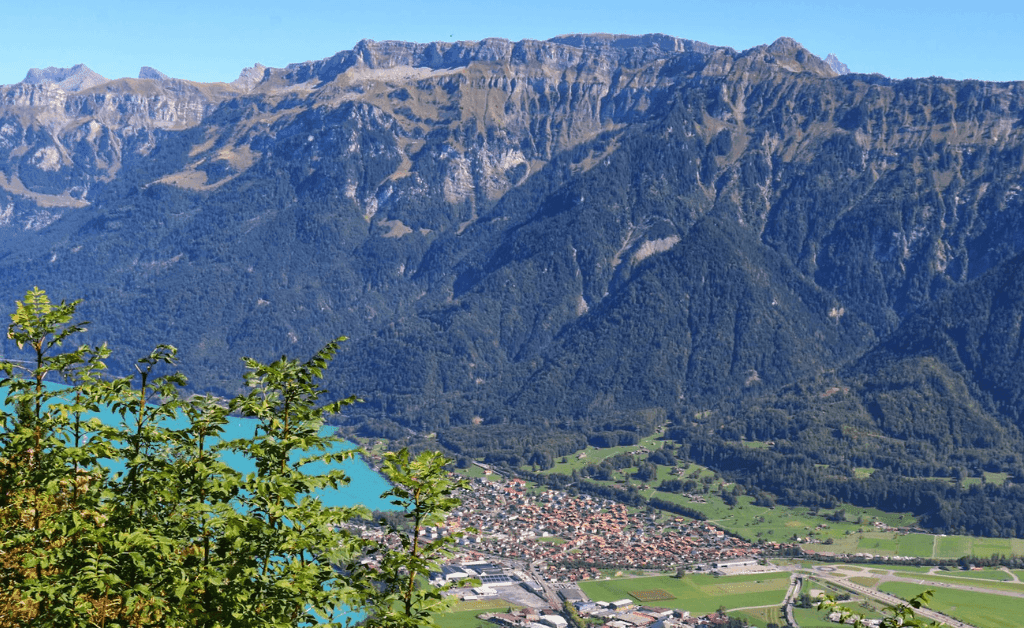
On the morning of day 5, take the scenic train journey from Lucerne to Interlaken (approximately 2 hours), the gateway to the spectacular Jungfrau Region.
Day 5: Explore Interlaken
- Morning: After arriving in Interlaken, take the funicular to Harder Kulm for a spectacular panoramic view of Interlaken and the surrounding mountains, including the famous trio of Eiger, Mönch, and Jungfrau.
- Afternoon: Explore Interlaken’s charming town center, shop for Swiss souvenirs, or take a relaxing boat cruise on either Lake Thun or Lake Brienz.
- Evening: For adventure seekers, consider a sunset paragliding flight over Interlaken for unforgettable views (weather permitting).
Unforgettable Experiences in the Jungfrau Region:
- Jungfraujoch: Top of Europe Day Tour – Visit the highest railway station in Europe with breathtaking Alpine views.
- Paragliding Flight over Interlaken – Soar above the lakes and mountains for an unforgettable aerial perspective.
- Harder Kulm Funicular Round Trip – Visit Interlaken’s local mountain for spectacular panoramic views.
Day 6: Jungfraujoch Excursion

- Full Day: Embark on the iconic journey to Jungfraujoch – Top of Europe, one of Switzerland’s most spectacular mountain excursions:
- Take the train from Interlaken to Lauterbrunnen or Grindelwald
- Change to the mountain railway that climbs through tunnels inside the Eiger and Mönch mountains
- Reach Jungfraujoch, Europe’s highest railway station at 3,454 meters (11,332 feet)
- Explore the Ice Palace, Alpine Sensation exhibition, and Sphinx Observation Deck
- Experience snow and ice year-round and enjoy breathtaking views of the Aletsch Glacier, the longest glacier in the Alps
- Evening: Return to Interlaken and relax after your mountain adventure.
Pro Tip: The Jungfraujoch excursion is expensive (300-360 CHF) but worth it for the once-in-a-lifetime experience. Check the weather forecast before going, as visibility is crucial for enjoying the views. Start early to avoid crowds, and consider booking tickets in advance during peak season.
Where to Stay in Interlaken:
Budget: Balmers Hostel is a popular choice for budget travelers with its fun atmosphere and beautiful garden.
Mid-range: Hotel Interlaken offers comfortable accommodations in a central location with a rich history dating back to the 14th century.
Luxury: Victoria-Jungfrau Grand Hotel & Spa provides an opulent experience with stunning mountain views and world-class amenities.
Photography Equipment for Switzerland:
Switzerland’s stunning landscapes deserve quality photography equipment. The Sony Alpha a6400 Mirrorless Camera offers excellent image quality in a compact, travel-friendly package.
For smartphone photographers, enhance your photos with a Moment Telephoto Lens for capturing distant mountain peaks and detailed landscapes.
Days 7-8: Grindelwald and Lauterbrunnen
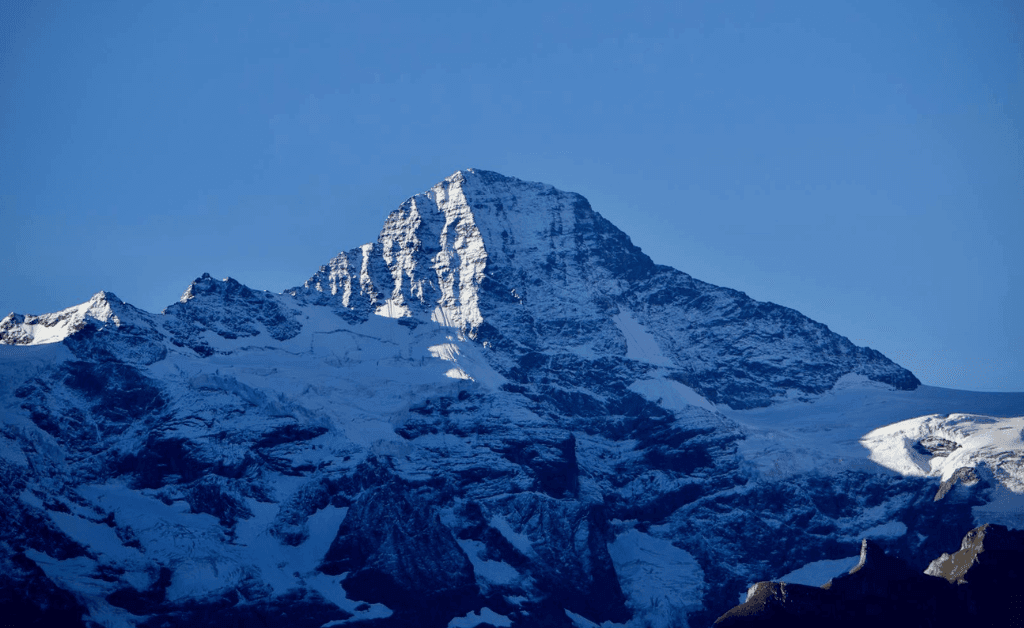
On day 7, check out of your Interlaken accommodation and take a short train ride (20-30 minutes) to either Grindelwald or Lauterbrunnen. These charming mountain villages offer a more immersive Alpine experience than staying in Interlaken.
Day 7: Grindelwald and First
- Morning: Arrive in Grindelwald and check into your accommodation. This picturesque village sits at the foot of the imposing Eiger North Face.
- Day Activity: Take the gondola from Grindelwald to First and enjoy a series of thrilling mountain activities:
- Experience the First Cliff Walk by Tissot, a walkway built along the rock face offering spectacular views
- Try the First Flyer zipline for an adrenaline rush
- Ride mountain carts or trotti bikes part of the way back down
- Hike to the beautiful Bachalpsee (Lake Bachalp), a 50-minute walk from First with stunning reflections of the mountains
- Evening: Return to Grindelwald and enjoy dinner at a traditional Swiss restaurant with views of the Eiger.
Best Experiences in Grindelwald and Lauterbrunnen:
- Grindelwald First Mountain Adventure – Experience the thrilling First Cliff Walk, zipline, and mountain carts.
- Lauterbrunnen Valley Waterfalls Trail – Discover the valley’s spectacular waterfalls on this guided hiking tour.
- Schilthorn Piz Gloria & James Bond World – Visit the revolving restaurant and James Bond exhibition with stunning mountain views.
Day 8: Lauterbrunnen Valley and Schilthorn

- Morning: Take the train from Grindelwald to Lauterbrunnen (30 minutes). Explore the spectacular Lauterbrunnen Valley, known for its 72 waterfalls and towering cliff faces that inspired J.R.R. Tolkien’s Rivendell in “The Lord of the Rings.”
- Day Activity: Choose one of these options:
- Option 1: Visit Schilthorn (2,970 meters), famous for its revolving restaurant Piz Gloria featured in the James Bond film “On Her Majesty’s Secret Service.” Take the cable car from Stechelberg via Gimmelwald and Mürren.
- Option 2: Explore the car-free villages of Mürren and Wengen, accessible only by cable car or cogwheel train, offering charming Alpine atmosphere and spectacular views.
- Option 3: Visit the impressive Trümmelbach Falls, a series of ten glacier-fed waterfalls inside the mountain, accessible by tunnel lift.
- Evening: Return to your accommodation in Grindelwald or Lauterbrunnen.
Pro Tip: If you’re staying in Lauterbrunnen, don’t miss the evening illumination of Staubbach Falls during summer months. For hikers, the trail from Männlichen to Kleine Scheidegg offers some of the most spectacular mountain views in Switzerland with relatively easy terrain.
Where to Stay in Grindelwald:
Budget: Downtown Hostel Grindelwald offers affordable accommodations with stunning views of the Eiger.
Mid-range: Hotel Kirchbühl features comfortable rooms with private balconies and panoramic mountain views.
Luxury: Romantik Hotel Schweizerhof offers luxurious accommodations with an excellent spa and gourmet dining options.
Hiking Accessories for Switzerland:
- A sturdy Osprey Talon 22 Hiking Backpack for carrying water, snacks, and extra layers
- Reliable Black Diamond Distance Z Trekking Poles for stability on steep Alpine trails
- A refillable Hydro Flask Water Bottle to stay hydrated on mountain excursions
Days 9-10: Zermatt and the Matterhorn
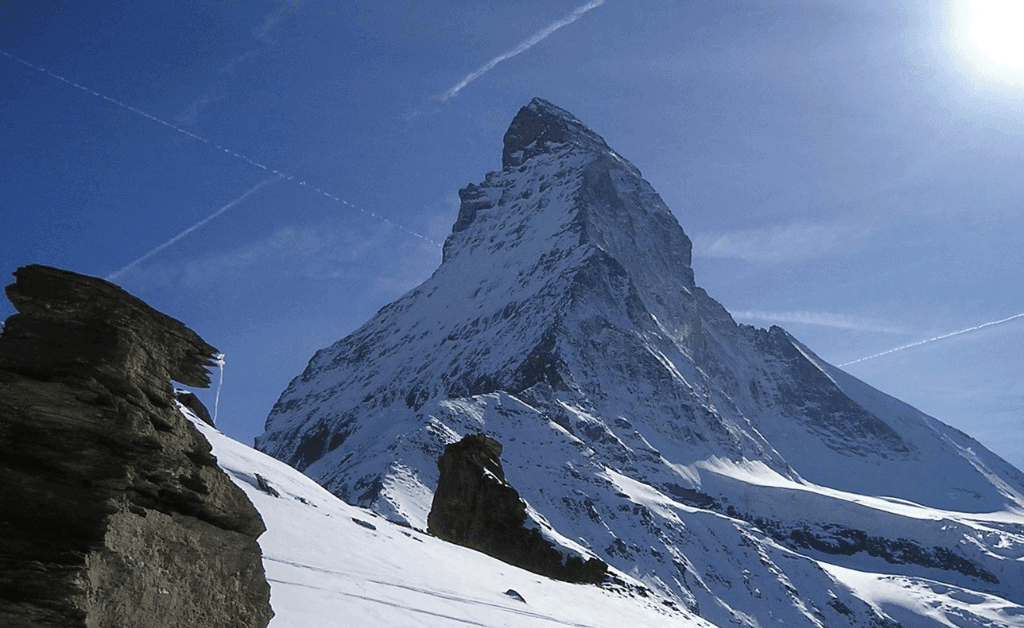
On day 9, travel from the Jungfrau Region to Zermatt (approximately 2.5-3 hours by train). This journey takes you through some of Switzerland’s most beautiful landscapes.
Day 9: Zermatt Village and Gornergrat
- Morning: Arrive in Zermatt, a car-free village at the foot of the iconic Matterhorn. Check into your accommodation and take time to explore the charming village center with its traditional wooden chalets.
- Afternoon: Take the cogwheel railway to Gornergrat (3,089 meters) for spectacular views of the Matterhorn and surrounding peaks. The 33-minute ride offers increasingly dramatic views as you climb nearly 1,500 meters in elevation.
- Evening: Enjoy dinner in Zermatt, perhaps trying traditional Swiss Alpine cuisine like raclette or rösti.
Top Experiences in Zermatt:
- Gornergrat Cogwheel Train Ticket – Ride the highest open-air cogwheel railway in Europe for spectacular Matterhorn views.
- Zermatt Guided Village Tour – Learn about the history and culture of this famous Alpine village.
- Matterhorn Glacier Paradise Cable Car Ticket – Visit Europe’s highest cable car station with panoramic views and the Glacier Palace.
Day 10: Matterhorn Glacier Paradise and Departure
- Morning: Take the cable car to Matterhorn Glacier Paradise at Klein Matterhorn (3,883 meters), Europe’s highest cable car station. Visit the Glacier Palace ice sculpture exhibition and enjoy 360° panoramic views from the observation platform.
- Afternoon: Depending on your departure time, either:
- Hike one of Zermatt’s scenic trails, such as the Matterhorn Glacier Trail or the Five Lakes Walk
- Visit the Matterhorn Museum to learn about the dramatic first ascent of the Matterhorn and Zermatt’s history
- Evening: Begin your journey home or to your next destination. Most international travelers will return to Zurich (3.5 hours by train) for flights out.
Pro Tip: The Matterhorn is often clearest in the early morning, so prioritize mountain excursions earlier in the day. If you have an extra day, consider taking the Glacier Express panoramic train from Zermatt to St. Moritz for one of the world’s most scenic railway journeys.
Where to Stay in Zermatt:
Budget: Matterhorn Hostel provides affordable accommodations in the car-free village of Zermatt.
Mid-range: Hotel Butterfly offers charming rooms with traditional Swiss décor and a convenient location.
Luxury: Grand Hotel Zermatterhof provides five-star luxury with exceptional service and unparalleled views of the Matterhorn.
Essential Travel Accessories for Switzerland:
Switzerland uses Type J electrical outlets, which differ from most European countries. Pack a Switzerland-specific Travel Adapter to keep your devices charged.
Getting Around Switzerland
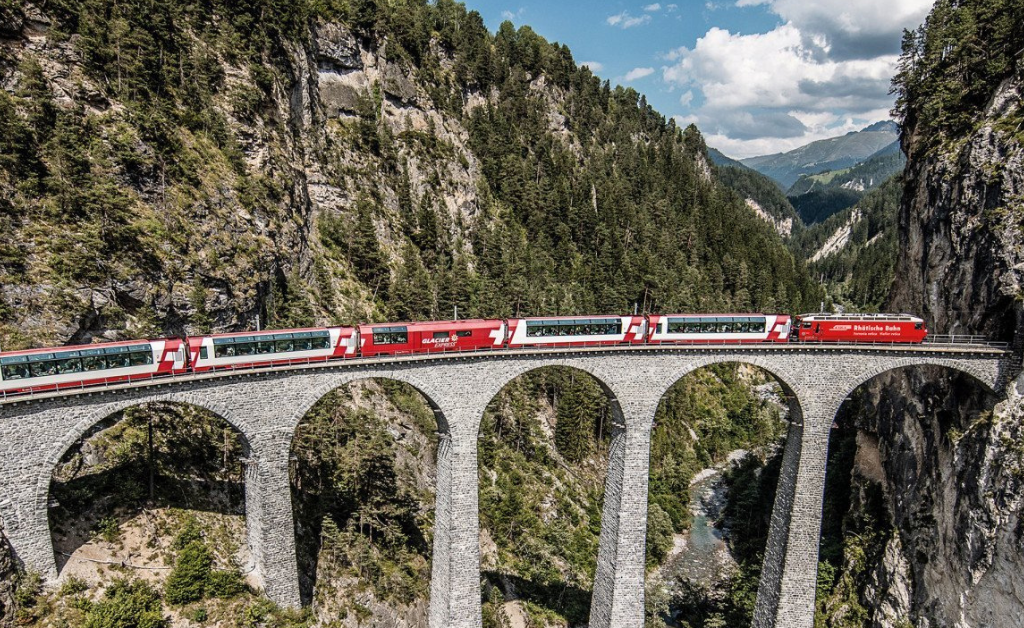
Getting Around Switzerland:
For this 10-day itinerary, I highly recommend the Swiss Travel Pass, which offers unlimited travel on trains, buses, and boats, plus free entry to over 500 museums. The 8-day pass is perfect for this itinerary, providing excellent value and convenience.
Switzerland has one of the world’s best public transportation systems, making it easy to travel between and within cities and towns:
- Trains: The Swiss Federal Railways (SBB) network is extensive, punctual, and comfortable. Trains connect all major cities and many smaller towns.
- Buses: PostBus services reach even the most remote valleys and villages not served by trains.
- Boats: Scenic boat cruises operate on most major lakes and are often included in the Swiss Travel Pass.
- Mountain Transportation: Cable cars, funiculars, and cogwheel railways provide access to mountain peaks. Some offer discounts with the Swiss Travel Pass.
Renting a Car in Switzerland:
While public transportation is excellent, some travelers prefer the flexibility of having their own vehicle. Compare car rental options from major providers at all major Swiss cities and airports. Keep in mind that parking can be expensive in cities, and some destinations like Zermatt are car-free.
Airport Transfers:
Start your Swiss adventure stress-free with a pre-booked airport transfer from Zurich Airport to your hotel. This is especially convenient if you’re arriving after a long flight or with substantial luggage.
Switzerland Travel Budget
Switzerland is one of Europe’s most expensive countries, but the experience is worth the investment. Here’s a breakdown of approximate daily costs per person:
- Budget Travel: 150-200 CHF ($165-220) per day
- Hostel dormitory: 40-60 CHF
- Budget meals (grocery stores, street food): 30-40 CHF
- Public transportation: 30-50 CHF
- Budget activities: 20-50 CHF
- Mid-range Travel: 250-350 CHF ($275-385) per day
- 3-star hotel or private room: 150-200 CHF
- Restaurant meals: 70-100 CHF
- Public transportation + mountain excursions: 50-100 CHF
- Activities and entrance fees: 30-70 CHF
- Luxury Travel: 500+ CHF ($550+) per day
- 4-5 star hotel: 300+ CHF
- Fine dining: 150+ CHF
- First-class transportation + private tours: 200+ CHF
Money-Saving Tips:
- The Swiss Travel Pass can save money if you plan to use public transportation frequently and visit museums
- Book mountain excursions in advance for better rates
- Consider staying in apartments with kitchens to prepare some of your own meals
- Tap water is excellent in Switzerland, so refill a water bottle instead of buying bottled water
- Many hotels offer free public transportation passes for their local area
Recommended Switzerland Travel Guides:
Enhance your Switzerland experience with the Lonely Planet Switzerland Travel Guide, which offers comprehensive information on all the destinations in this itinerary.
For hiking enthusiasts, Hiking in Switzerland: Mountain Walks and Classic Trails provides detailed trail information and stunning photography.
Practical Switzerland Travel Tips
- Language: Switzerland has four official languages: German (Swiss German), French, Italian, and Romansh, depending on the region. English is widely spoken in tourist areas.
- Currency: Swiss Franc (CHF). While credit cards are widely accepted, it’s good to have some cash for smaller establishments and mountain huts.
- Tipping: Service is typically included in restaurant bills. Rounding up or adding 5-10% for exceptional service is appreciated but not expected.
- Electricity: Switzerland uses Type J plugs (unique to Switzerland) with 230V/50Hz electricity. Bring a specific Swiss adapter.
- Weather Preparation: Mountain weather can change rapidly. Always bring layers, rain protection, and sun protection, even on seemingly clear days.
- Opening Hours: Shops typically close early (6:30-7:00 PM) and remain closed on Sundays. Plan your shopping accordingly.
- Reservations: Book popular mountain excursions and restaurants in advance, especially during high season (July-August).
Authentic Swiss Products:
Can’t wait until your trip to taste Swiss chocolate? Try Lindt Swiss Classic Chocolate or Toblerone with its distinctive triangular shape inspired by the Matterhorn.
Conclusion: Your Perfect Switzerland Itinerary
This 10-day Switzerland itinerary offers a perfect balance of iconic cities, charming villages, and breathtaking mountain scenery. From the cultural attractions of Zurich to the majestic Matterhorn in Zermatt, you’ll experience the incredible diversity that makes Switzerland one of the world’s most beautiful destinations.
While 10 days allows you to see many highlights, Switzerland rewards those who can travel slowly and immerse themselves in its natural beauty and cultural richness. If you have more time, consider extending your stay in the Jungfrau Region or adding destinations like the Italian-influenced Ticino region or the French-speaking areas around Lake Geneva.
Remember that this itinerary is flexible and can be adjusted based on your interests, whether you’re passionate about hiking, photography, culinary experiences, or cultural attractions. The excellent transportation system makes it easy to modify plans as you go.
Switzerland may be expensive compared to other European destinations, but the unforgettable experiences, impeccable infrastructure, and stunning natural beauty make it worth every franc. With careful planning using this itinerary as your guide, you’re set for an incredible Swiss adventure that will leave you with memories to last a lifetime.
Plan Your Switzerland Trip:
Complete Switzerland Packing List:
Clothing:
- Waterproof hiking boots
- Moisture-wicking shirts
- Quick-dry hiking pants
- Merino wool hiking socks
- Waterproof jacket
- Fleece mid-layer
- Thermal base layers (for mountain visits)
Frequently Asked Questions About Switzerland Travel
When is the best time to visit Switzerland?
The best time to visit Switzerland depends on your interests. For hiking and outdoor activities, June through September offers the best weather. For skiing and winter sports, December through March is ideal. For fewer crowds and pleasant weather, consider the shoulder seasons of May-June and September-October.
Is Switzerland expensive to visit?
Yes, Switzerland is one of Europe’s most expensive countries. Budget travelers should expect to spend at least 150-200 CHF ($165-220) per day, while mid-range travelers will spend around 250-350 CHF ($275-385) daily. However, the exceptional quality of infrastructure, cleanliness, and natural beauty make it worth the investment.
Do I need a visa to visit Switzerland?
Switzerland is part of the Schengen Area. Visitors from the US, Canada, Australia, and many other countries can enter without a visa for up to 90 days. Always check the latest entry requirements before traveling.
Is the Swiss Travel Pass worth it?
For most tourists following an itinerary like this one, the Swiss Travel Pass offers excellent value. It covers all trains, buses, and boats, provides free entry to over 500 museums, and offers discounts on many mountain excursions. Calculate your planned transportation costs to determine if it’s worthwhile for your specific trip.
What language is spoken in Switzerland?
Switzerland has four official languages: German (spoken by about 63% of the population), French (23%), Italian (8%), and Romansh (less than 1%). English is widely spoken in tourist areas, major cities, and by younger people.
Is hiking in Switzerland difficult?
Switzerland offers hiking trails for all difficulty levels. Many popular trails are well-maintained and suitable for beginners and families. More challenging hikes are clearly marked with difficulty ratings. Always check trail conditions, wear appropriate footwear, and be prepared for weather changes in the mountains.
Can I drink tap water in Switzerland?
Yes, Swiss tap water is among the cleanest in the world and perfectly safe to drink. Many towns have decorative water fountains that provide fresh drinking water. Bring a reusable water bottle to refill throughout your trip.
How much should I tip in Switzerland?
Service is included in restaurant bills in Switzerland. While tipping isn’t expected, it’s common to round up the bill or add about 5-10% for exceptional service. For taxi drivers, rounding up to the nearest franc is appreciated.
Are credit cards widely accepted in Switzerland?
Yes, credit cards (particularly Visa and Mastercard) are widely accepted in hotels, restaurants, and shops in Switzerland. However, it’s advisable to carry some cash for smaller establishments, mountain huts, and rural areas. ATMs are readily available throughout the country.
What are the must-try Swiss foods?
Don’t miss traditional Swiss dishes like cheese fondue, raclette, rösti (potato dish), Zürcher Geschnetzeltes (veal in cream sauce), and Swiss chocolate. Each region has its specialties, so try local dishes wherever you go.
As an Amazon Associate I earn from qualifying purchases. This post contains affiliate links, which means I may receive a small commission, at no extra cost to you, if you make a purchase through these links.

